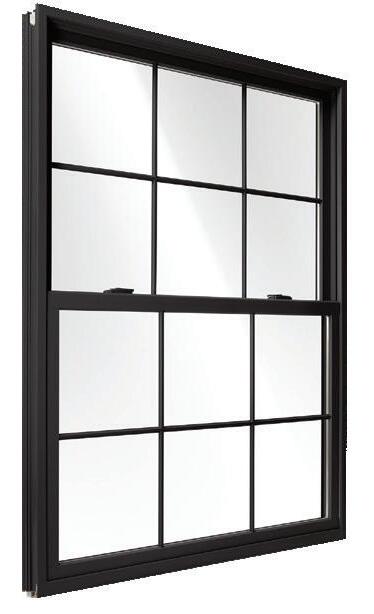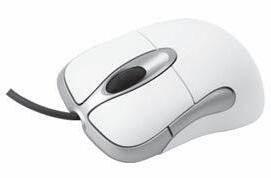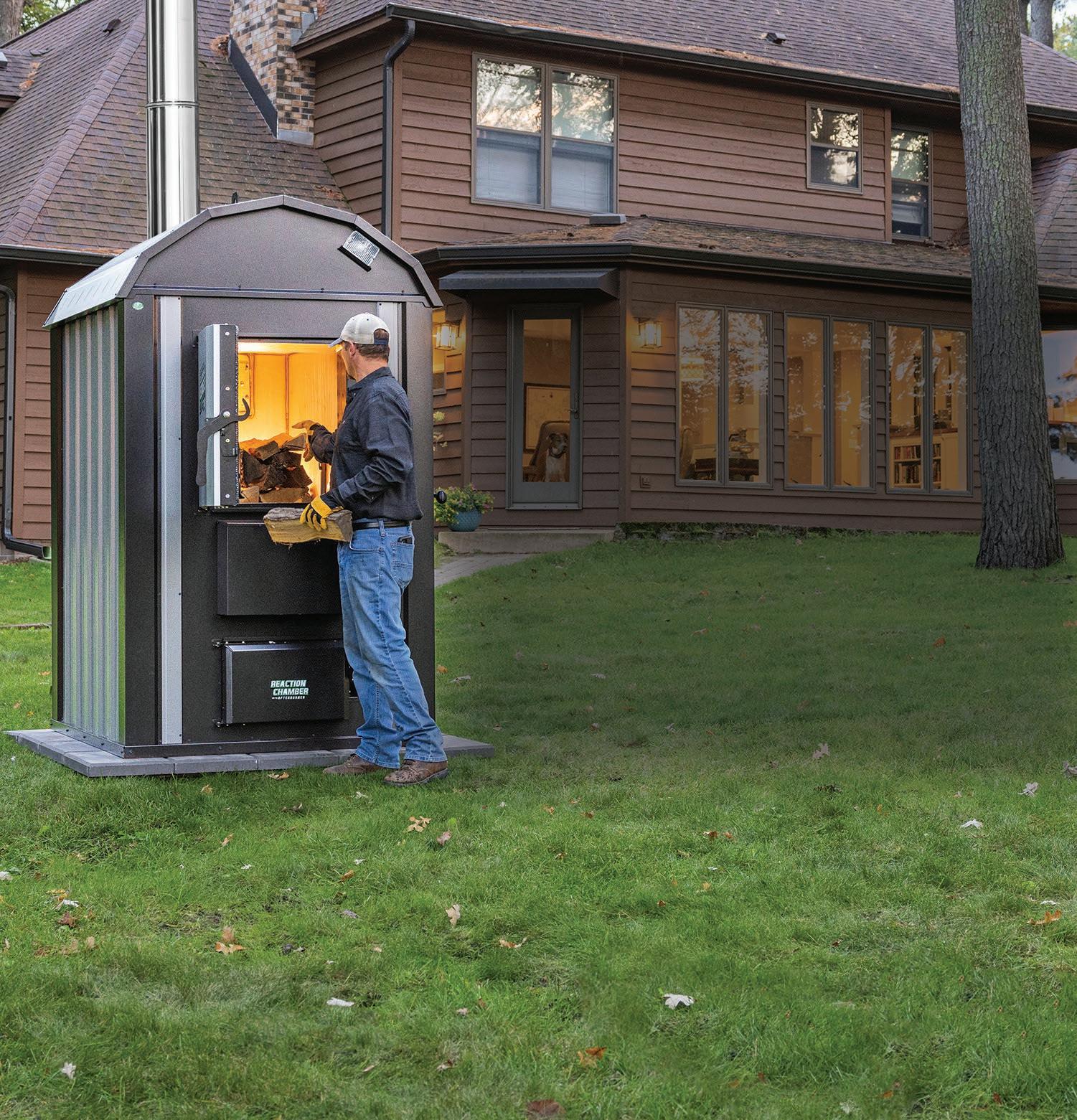





































































































































































































































































































































































































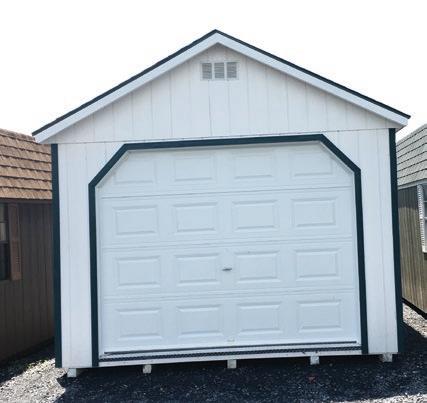


















































































































































































































































































































































































































































































The holiday season wouldn’t be the same without decorations, which go a long way toward establishing the festive atmosphere that dominates the month of December. Injuries and accidents may be the furthest thing from people’s minds when decorating for the holidays, but the potential for such outcomes is there. This season, holiday celebrants are urged to keep these safety strategies in mind as they deck the halls.
• Choose a fresh tree if you’re going the natural route. Some people prefer natural Christmas trees because of their scent and additional characteristics. While it’s alright
to choose a natural tree, the Consumer Product Safety Commission notes that many artificial trees are fire-resistant, which makes them a good deal safer than natural trees. The CPSC urges individuals who opt for a natural tree to check for signs of freshness before making their decision. Such signs include a tree that is green, fresh needles that are difficult to pull from branches and do not break when bent between the fingers, and a trunk that is sticky with resin. In addition, when bounced on the ground, a fresh tree will not shed too many needles. One that does is dried out, which poses a significant safety hazard inside a home.
• Inspect lights before decorating. Holiday lights are another staple of the season, but these, too, can pose a safety hazard. The CPSC recommends inspecting both new and old lights for broken or cracked sockets, frayed or bare wires, and/or loose connections. Discard any damaged lights. When hanging lights outside, make sure they are fastened securely to trees, a house or other structures to protect against wind damage. In addition, the CPSC recommends using no more than three standard-size sets of lights per single extension cord. Electric lights should never be used on a metallic tree, and all lights should be turned off at
night before going to bed or leaving the house.
• Be especially cautious with candles. Electric candles may not provide the same ambiance as more traditional alternatives, but they are a safer option when decorating for the holidays. If using traditional candles, make sure they are never placed on or near natural trees and keep them away from flammable materials, including wrapping paper and other decorations, at all times. Candles should always be extinguished when leaving a room.
• Exercise extreme caution around the fireplace. A freshly lit fire can establish a warm and welcoming holiday ambiance. However, it’s
essential that individuals emphasize extreme caution around the fireplace. Remove all decorations, such as stockings, from the area surrounding the fireplace. The CPSC also notes the importance of keeping a screen before the fireplace whenever a fire is burning. Decorations help make the holiday season special. Some simple safety precautions can ensure such decorations don’t increase the risk for accidents and injuries.

Meteorologists are predicting an El Niño weather pattern this winter. What that spells out for particular regions of the country remains to be seen, but when snow hits certain areas hard, cleanup will be necessary.
It is essential for homeowners and business owners to get outdoors promptly to remove snow from walkways for the safety of pedestrians.
Shoveling snow can be back-breaking work, particularly when the snow is very wet or compacted. That’s why many people have invested (or plan to invest) in snow blowers to make faster work of snow removal. While these tools are quite effective, they require caution and proper technique to help avoid injuries. The Consumer Product Safety Commission estimates
there are 5,740 hospital emergency room-related injuries associated with snow blowers each year. The organization Safety Now says most injuries associated with snow blowers involve injuries to the hands or fingers, including amputation.
Individuals can prevent common injuries and even death by following these snow blower safety guidelines.
ered devices give off carbon monoxide.
• Stay focused on the task at hand, which means using the snow blower only when sober and not under the influence of medications that can cause drowsiness.
• Keep all safety shields and mechanisms in place on the machine.
• Do not leave a snow blower unattended.
• Read the owner’s manual to understand all of the controls and features
• Dress accordingly foring sturdy footwear with good traction. Boot or shoe grippers can reduce the risk of slips and falls. Also, avoid loose clothing, as scarves or jackets can
er outside and not in a
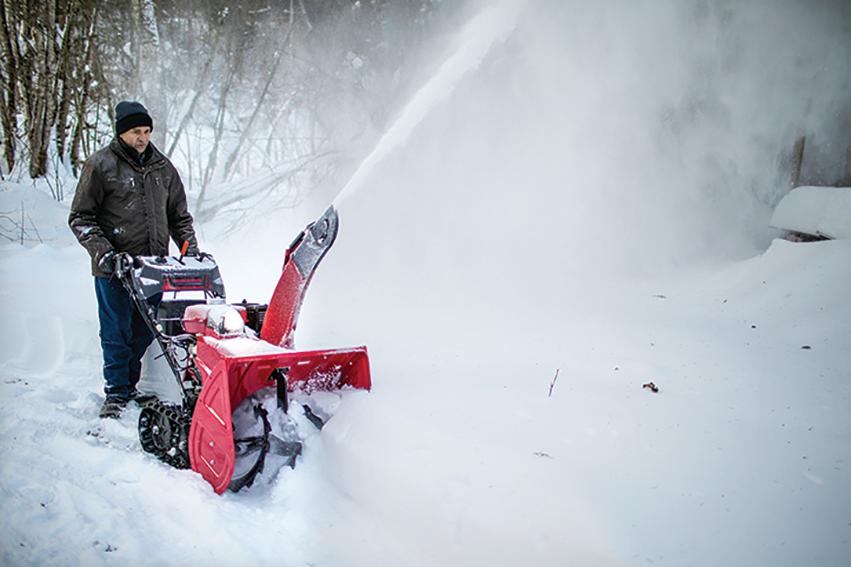


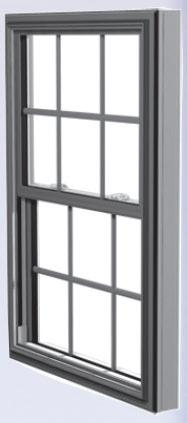







• Working at a brisk pace can help prevent the snow blower blades from getting clogged from the snow sticking. Wet, heavy snow is more likely to clog the machine, so it may require more passes to get the job done.
• If the snow blower is an electrical version, use an extension cord designed for outdoor use and plug it into an outlet equipped with a ground fault circuit interrupter. Keep the extension cord away from the auger.
Even though snow blowing can be less physically taxing than manually shoveling snow, it still
exerts the body. Take frequent breaks to rest. Exercise caution where you toss the snow, and make sure other people, particularly children, are not in the path of snow removal








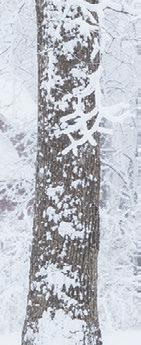


• Clogs can occur, and require extreme caution to dislodge. Always turn off the snow blower and disengage the clutch, says the American Society for Surgery of the Hand. Wait for the impeller blades to stop spinning. Always use a broom handle or a stick to clear compacted snow. Never stick your hand down the chute or around the blades, even if the power switch is off.


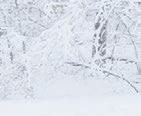







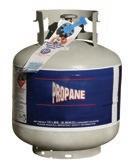





Winter is historically marked by an increase in people getting sick. That’s because certain conditions common to winter can make it easier for infectious agents to spread. Handwashing becomes even more essential as winter rears its chilly head.
Northwestern Medicine says the body is not as effective at fighting a virus when cold air enters the nose and upper airways. That means the flu, common cold and even COVID-19 can spread more easily in the winter. Also, people tend to huddle indoors where it is warm when the mercury outside drops. That puts people in closer contact with others who may be harboring these viruses or other infectious diseases in their bodies.
Individuals often get less exposure to sunlight during the winter, which
can adversely affect their natural production of vitamin D. Low levels of vitamin D have been linked to a weakened immune system, which can make fighting illnesses more difficult.
The Centers for Disease Control and Prevention says handwashing is an important step in staying healthy all year long, and especially during the winter when conditions are ripe for the spread of disease. Many diseases and conditions are spread by not washing hands with soap and clean running water. The CDC says that, in addition to the viruses mentioned above, people can become ill from exposure to even small amounts of feces from people or animals, which can contain Salmonella, E. coli and norovirus. It also may spread some respiratory infections like adenovirus and hand-
foot-mouth disease. These germs can get onto hands after people use the toilet or change a diaper, but also after handling raw meats that have minute amounts of animal feces on them.
The Cleveland Clin-
by keeping hands clean. Germs from unwashed hands can be transferred to objects like tabletops, door handles and even foods and beverages, which underscores the significance of handwashing.
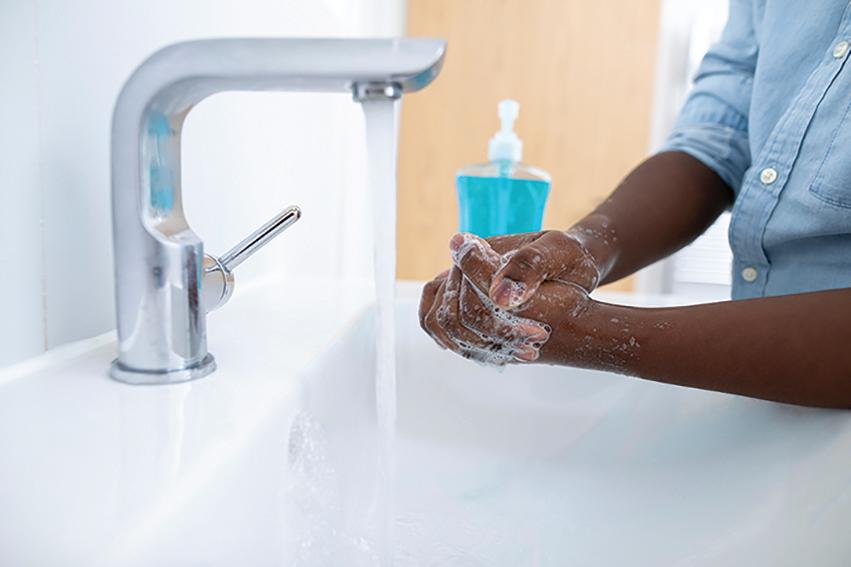
ic advises that a person can prevent one in three illnesses that cause diarrhea and one in five respiratory infections simply
The best way to wash hands involves some easy steps.
1. You should wash your hands frequently,
and especially after using the toilet; changing diapers; before, during and after preparing food; before eating; before touching your nose, eyes or mouth (including handling dentures or orthodontic aligners); after sneezing, coughing or blowing your nose; and when you arrive home from shopping or being in high-traffic public areas.
2. Wet your hands with clean, running water and use soap if it is available. Any soap will do. Antibacterial products are not essential.
3. Lather up for about 20 seconds, says Nemours KidsHealth, and make sure to get in between fingers, on the back of hands and under the nails where germs like to linger. Don’t forget to also wash the wrists.
4. If possible, remove rings and watches before washing hands, or try to at least move the rings to wash under them.
5. Rinse hands well under running water to remove all traces of soap.
6. Dry hands using a clean towel or air dry them. It is best to use paper towels or a single-use cloth towel.
7. Use a clean paper towel to turn off the faucet and open the door in public restrooms. People at home should routinely wipe down faucets and handles with cleansing products to remove germs from these high-touch points. Frequent laundering of towels also can be effective.
Winter can be harsh.
Frigid temperatures and fewer hours of daylight can take a toll, and many people prefer to stay warm inside as much as possible during winter. Indoor air also can take a toll, leading to dry skin and increasing individuals’ exposure to viruses such as those that cause the common cold. Warm and dry indoor air also can affect houseplants, which underscores how important it is to change your indoor plant care routine in winter.
Outdoor plants might not bloom or thrive once winter arrives, but houseplants can make it through the season with a few simple strategies.
• Cut back on watering, if necessary. The relationship between sunlight and water in regard to houseplants is simple: the more light plants get, the more water they need. Because there’s less daylight in winter, houseplants may not need to be watered as frequently as they will during other times of year. But that could depend on where the plant is located in the house. If it’s near a window with substantial sunlight exposure, then it might need as much water as it requires during other times of year. Soil
Stephen Alexander Owner

conditions may provide clues as to how frequently houseplants need to be watered in winter. Touch the soil before watering. If it’s wet or feels damp, the plant does not require watering.
• Mobilize your houseplants. Some houseplants may be too large and heavy to move. However, smaller plants may benefit from being more mobile. When moving houseplants, move them to a spot where they can get ample sunlight during the day, especially if they’re typically located in areas of your home that do not get much exposure to sunlight in the winter.
• Keep plants away from vents. Anyone who lives in a region where winter temperatures get very cold knows that conditions sometimes require bumping up the temperature on the thermostat. That can make a home more comfortable for humans but less comfortable for houseplants. It’s always best to keep houseplants away from heating vents so they won’t dry out and potentially die. If the thermostat needs to be adjusted to warm up the house, confirm all plants are away from vents to ensure they don’t dry and out and potentially die.
• Check for uninvited guests. Summer might be the season most synonymous with pests, but houseplants are not invulnerable to uninvited pest guests in winter. The pest control experts at Terminix® dispute the popular notion that spiders flock to home interiors in fall to avoid the coming winter cold. However, the experts at Better Homes & Gardens note that spider mites are common winter pests because they like warm and dry conditions. BHG urges individuals to inspect the tops and undersides of houseplant leaves and stems for signs of pest infestation. Treat small infestations with an alcohol-soaked cotton ball, which can be used to wipe pests off the plants. Large infestations may require the use of insecticidal soap. Winter is harsh on humans and can be hard on houseplants as well. Some simple strategies can help houseplants get through the season unscathed.



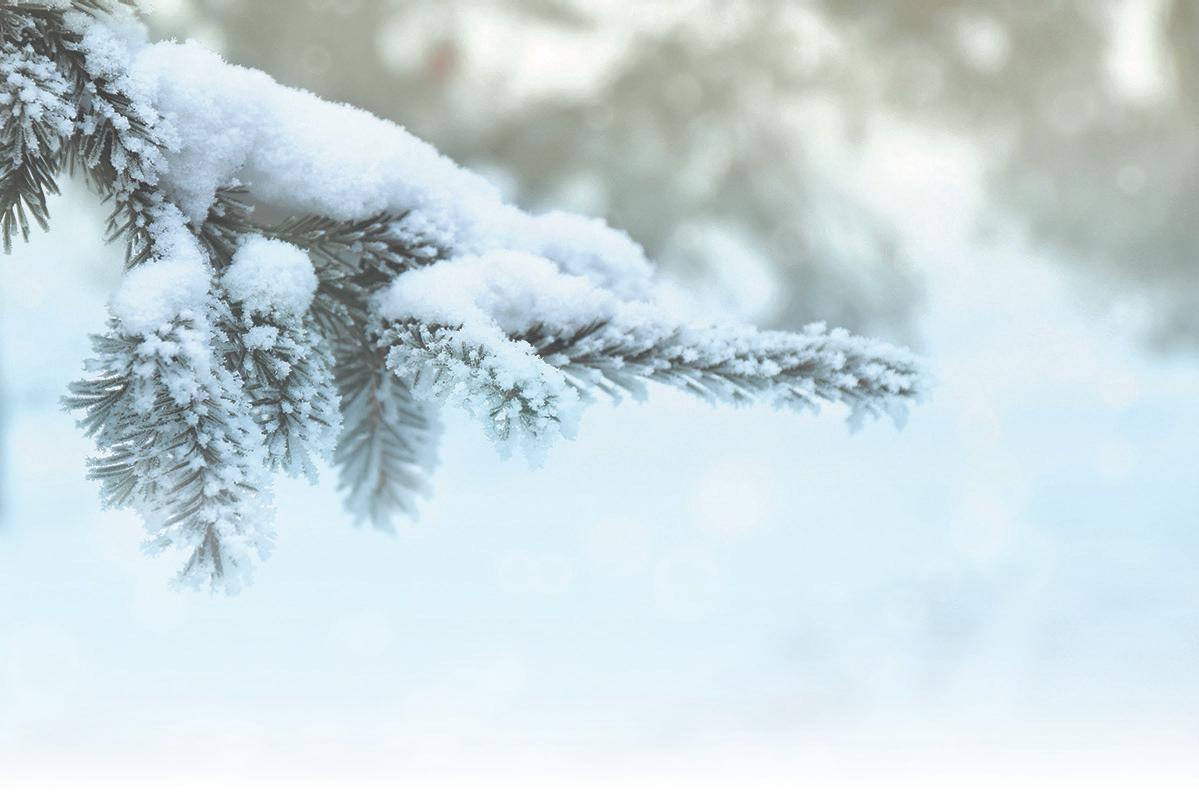


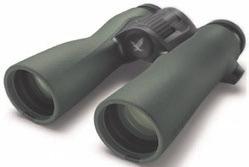



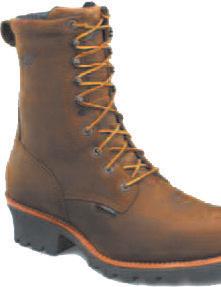








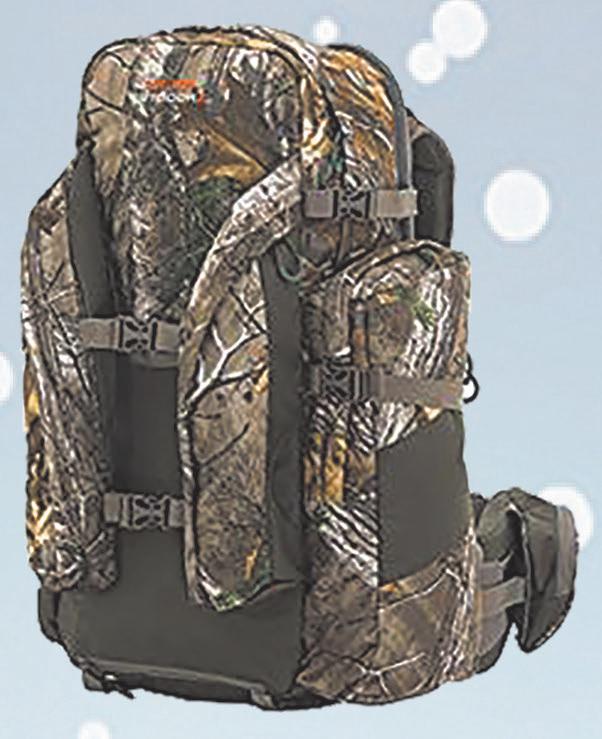








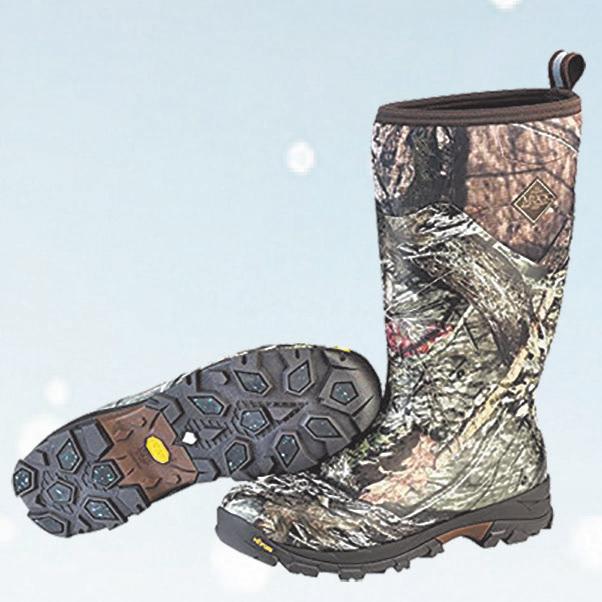





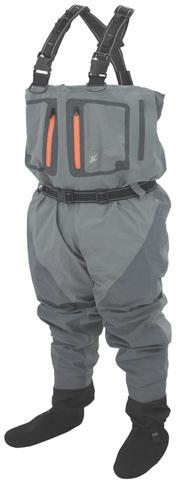


Ø
Ø
Ø
Ø
Ø
Ø
Ø
Ø
Ø
Ø




As November draws to a close, calendars start to fill up with social engagements celebrating the holiday season. The holiday season certainly is a time for merrymaking, as a 2023 survey of 2,000 Americans conducted by OnePoll on behalf of Chinet found the average person would attend five different gatherings during this celebratory time of year. Parties are a festive component of the holiday season, and dates and venues fill up fast. Because of that popularity, individuals looking to host holiday parties may opt to do so at home. There are several advantages to hosting at home.
However, hosting at home requires planning and some extra concessions.
• Shop around to save money. Quite often home parties are more cost-effective than having an event at a venue. You can shop around for the best prices on items, and tailor the menu to your budget rather than paying a set “head price” at a party hall or restaurant.
• Move out furniture. Spaces in a home may not be as open or extensive as reception halls or restaurants, so it might be a smart idea to move some furniture to create additional space for guests. Temporarily remove bulky sofas and chairs, replacing them
with smaller chairs and cocktail tables.
• Address safety concerns. Hosts planning to host at home should make a list of safety concerns and put plans in place to reduce risk for accidents or injuries. For example, there may be ordinances about parking too many cars on a residential street, so arrangements may need to be made with a church or nearby business to use their lot and then shuttle guests. Have plans for ride-shares or taxis so that no guest will leave the party and drive if they are intoxicated. It’s also a courtesy to alert neighbors about the party so they will be aware of the extra noise and traf-
fic.
• Hire support staff. Hire some helping hands for home parties with extensive guest lists. A bartender can serve drinks and make sure that guests are not over-served. Wait staff can help clean up dishes and plates and be sure that the food is stocked and ready to go.
• Arrange for pets to be safe. Pets may not appreciate the extra crowds or elevated noise levels in a home during the party. Make arrangements to board pets or at least confine them to a quiet room away from the hustle and bustle.
• Blend catering with homemade treats. Cooking for guests requires
getting an accurate headcount. To help, let caterers do some of the more labor-intensive dishes and then you can offer some of your signature dishes that are easier to prepare.
Hosting a holiday party at home requires some extra planning and safety measures to ensure everyone has a fun and safe night.

Adults often lament a lack of time to incorporate exercise into their daily routines. Such difficulties are not exaggerated, as the demands of work and family, particularly for parents of young children with busy schedules of their own, can leave little time for daily workouts. Hectic schedules typically do not prevent older adults and seniors from exercising, but aging men and women may still confront some challenges as they aspire to be as physically active as possible.
Boredom with an exercise routine can adversely affect individuals’ motivation to be physically active. When that happens, even individuals with ample time to exercise, such as empty nesters ands seniors,
may find it increasingly difficult to go to the gym or work out at home. In such situations, the more diverse a workout routine is, the less monotonous it can feel, and that lack of monotony can be enough to keep individuals up and moving. With that in mind, the following suggestions can help individuals diversify their workout routines so they remain engaged with physical activity.
• Make use of the seasons. Exercise boredom can develop at any time of year, but disinterest in a workout routine might be especially likely when diversifying a regimen becomes more difficult. For example, the colder temperatures of winter can force individuals to do most if not all of their exercising indoors, which

can grow monotonous over time. If exercising outdoors in winter is a nonstarter, then individuals can emphasize outdoor workouts through-
workouts on a treadmill or elliptical with bike rides when the weather allows. Individuals also can invest in gear to keep them warm so they can
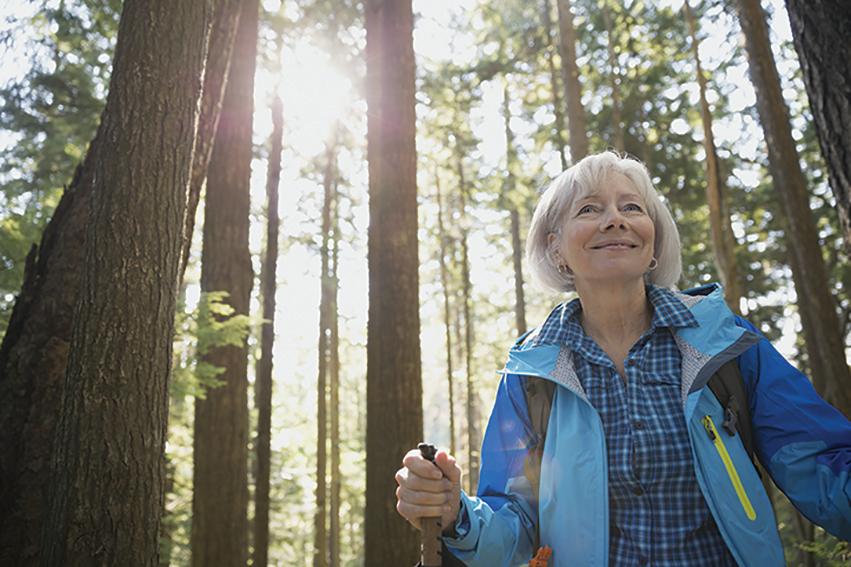
out the rest of the year when the weather is more amenable. Incorporate hiking into your weekly routine in spring, summer and fall, and replace typical cardiovascular
get outside to exercise after the mercury drops.
• Skip the circuit workouts for more specialized regimens. Circuit workouts can be great for busy individuals
without much time to exercise each week. Such workouts target various muscle groups in quick succession, which allows individuals to work out every muscle group even during weeks when time is limited. However, circuit workouts can be monotonous for people who have the time to exercise each day. In such situations, individuals can specialize their workouts so they target a different muscle group during each session. Doing so can diversify a workout to reduce boredom and may even decrease the risk of repetitive use injuries.
• Embrace new ways to exercise. A gym with all the familiar weights, machines and cardiovascular equipment might be the first thing people think of when pondering
exercise. And while gym memberships can motivate people to exercise, traditional fitness facilities are not the only places to break a sweat and be physically active. If a diverse workout regimen is your goal, consider incorporating yoga, Pilates and other less traditional forms of exercise into your routine. Many fitness facilities even offer such classes, and local communities also may feature standalone yoga studios or other establishments offering specific exercises.
Diverse workout routines can help people overcome the boredom and lack of motivation that can develop when regimens feature little variety.





The holiday season is a time of year when there never seems to be enough hours in the day. Calendars are jam-packed with all sort of activities from the moment Thanksgiving arrives until revelers scream “Happy New Year!” Travel also is a common component of the holiday season, as millions cross time zones
in order to see loved ones each December. Rest does not always come easy while away from home. A number of factors can contribute to this inability to settle.
“In an unfamiliar place, our brains become instinctively more alert, increasing adrenaline to keep us awake and ready to defend ourselves or our
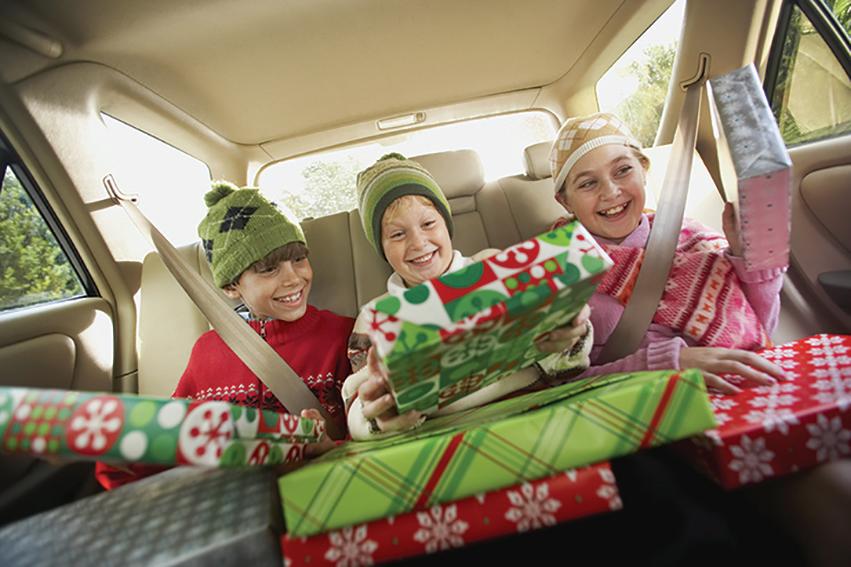
loved ones,” says Martin Seeley, CEO of Mattress Next Day in the United Kingdom. This “fight” response may be even stronger when traveling with family.
People have a lot on their minds and tasks to get done in a short period of time during the holiday season. It can be challenging to wind down and find rest when one is so frequently on the move. It is possible to get more rest for those who plan accordingly. Here are some tips for getting some relief while traveling for the holidays.
• Bring familiar items from home. It is not just children who can benefit from some comforting items from home. Adults also can enjoy the benefits of familiar pillows and blankets, for exam-
ple. Aromas are strongly associated with familiarity and triggering memories. So a pillowcase that smells like a home laundry detergent can trigger the body to relax.
• Utilize noise-cancelling earplugs/headphones. Unfamiliar noises can interrupt rest and sleep. Using noise-cancelling products or listening to white noise while settling down to rest can induce sleep.
• Follow the two-day rule. Johns Hopkins Medicine recommends those who will be staying somewhere for fewer than two days to try to keep to a typical schedule. By the time your body adapts to a different schedule, it will be time to come home again.
• Don’t overfill your schedule. It’s tempting
to try and do too much during holiday visits, but jamming your schedule could lead to additional fatigue. That could translate into not enjoying yourself as much as possible because you’re simply too tired.
• Avoid too much alcohol. Some people indulge a bit too much while celebrating the holidays. Although alcohol initially can make you feel sleepy, it leads to poor sleep quality that eventually can wake you up in the middle of the night or contribute to a restless few hours of sleep. Limit drinking, particularly late at night.
• Put electronics away.
Lauri Leadly, a sleep educator at Valley Sleep Center in Arizona, says the blue light emitted from many digital devices can disrupt the circadian
rhythm in your body that regulates sleep and wake. When the sun begins to set, turn off devices and stick to darker rooms to begin to set the body up for rest. This is a great time to gather in a room filled with firelight or candlelight.
• Move your body. Be active during the day even when you are traveling for the holidays. Physical exertion is good for the mind and the body, and may help you get better rest each night.
Resting while traveling during the holiday season may not be so easy. But some simple strategies can increase the chances holiday travelers get adequate rest while away from home.
Winter arrives with fanfare as Christmas, Chanukah and New Year’s Eve all take place within days of the first day of the season. Parties and shopping may distract people from the weather around them, but after resolutions are made and the decorations are packed away, it’s not long before it’s time to confront winter’s wrath.
Storms are commonplace in January and February in many parts of the world, and even March storms are not unheard of. Knowing how to prepare for storms can keep people safer and prevent home damage. If a storm is forecasted, follow these guidelines.
• Charge a mobile phone and other electronic devices to full battery in advance of the storm in case power goes out.
• Stock the home with extra batteries for flashlights and battery-powered devices, such as a portable radio.
• Invest in a car charger to charge devices if the power is out for some time.
• Keep a supply of canned or boxed nonperishable items, as well as convenience foods that do not need to be cooked, like granola bars.
• Periodically check to ensure that the first aid kit is stocked with items that have not expired.
• Refill medications so that they are on hand in the event weather makes it challenging to get to the store.
• Keep emergency supplies of bottled water. If you forget this, fill the bathtub up with fresh water. Extra water will be needed for toilet flushing if yours is a septic system.
• Have warm blankets on hand and sleeping bags for each person in the home.
• Unplug all electronic devices if the power goes out to protect against a surge and damage when the power is restored.
• Exercise caution when burning candles, opting for flashlights and lanterns instead.
• If it’s very cold outside, move refrigerated and frozen items outdoors so they do not spoil in an unpowered refrigerator.
• Do not use gas stoves, charcoal grills or other open-flame heat sources for warmth indoors. Carbon monoxide gas can build up inside and prove deadly.
• Follow the manufacturer’s instructions when using a backup generator for power.
• Stock up on gasoline for vehicles and to power gas-driven generators.
• Use power company websites and apps to report outages and stay apprised of restoration status.

